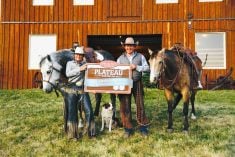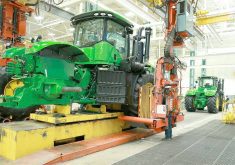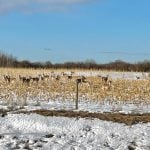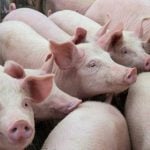Organized cultivation of food crops like wheat and barley began about 10,000 to 12,000 years ago in the Fertile Crescent, what is now the Middle East.
Great strides in agriculture have been made since through innovation, technology and genetics to help feed the world’s growing population. Despite this, however, more than one billion people went hungry in 2009, 100 million more than last year.
The increase is not a result of poor harvests, but due to high food prices, particularly in development nations, and lower incomes and lost jobs due to the economic downturn.
Read Also

Guarding against misinformation: Do you believe in house hippos?
Misinformation and disinformation run rampant in today’s digital age. Farmers must be wary of the digital dangers and know how to keep themselves safe.
Here are some landmark moments in world agriculture:
1701 -Briton Jethro Tull invented the seed drill, an improved plough that was drawn by a horse.
1798 -Thomas Malthus predicts impending famine as population growth outstrips food production.
1831 -American Cyrus McCormick
introduced his mechanical reaper, which was mass produced by 1847 in a Chicago factory.
1863 -The U.S. Agriculture Department, which forecasts crop production for major countries across the globe, publishes its first monthly crop report.
1866 -Austrian Gregor Mendel laid the foundation of modern genetics by showing traits pass from parents to offspring.
1873 -American John Deere designed the first cast steel plough.
1881 -First generation of hybrid corn to increase production created.
1892 -First successful gasoline engine farm tractor built by American inventor John Froelich.
1923 -Commercial hybrid seed corn developed by Henry Wallace, who in 1926 founded the Hi-Bred Corn Co (now Pioneer Hi-Bred International).
1934 -Worst drought in U.S. history swept through the Great Plains and covered more than 75 per cent of the country.
1944 -Normal Borlaug, father of the Green Revolution to increase food production, joins Rockefeller Foundation.
1945 -Beginning of the Green Revolution to increase food production through new cultivars, irrigation, fertilizer, pesticides and mechanization.
1956 -Mexico becomes self-sufficient in wheat as a result of the Green Revolution.
1960 -Philippines government, Ford and Rockefeller foundations establish the International Rice Research Institute in Manila.
1968 -William Gaud, director of the U.S. Agency for International Development, coins the term Green Revolution. “These and other developments in the field of agriculture contain the makings of a new revolution. It is not a violent Red Revolution like that of the Soviets, nor is it a White Revolution like that of the Shah of Iran. I call it the Green Revolution.”
1970 -Borlaug is awarded Nobel Peace Prize for his contributions to world peace through increasing food supply.














